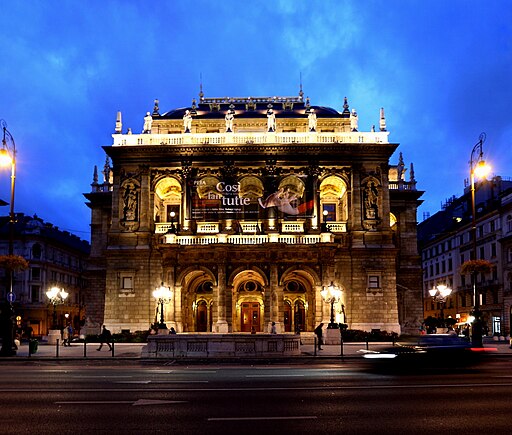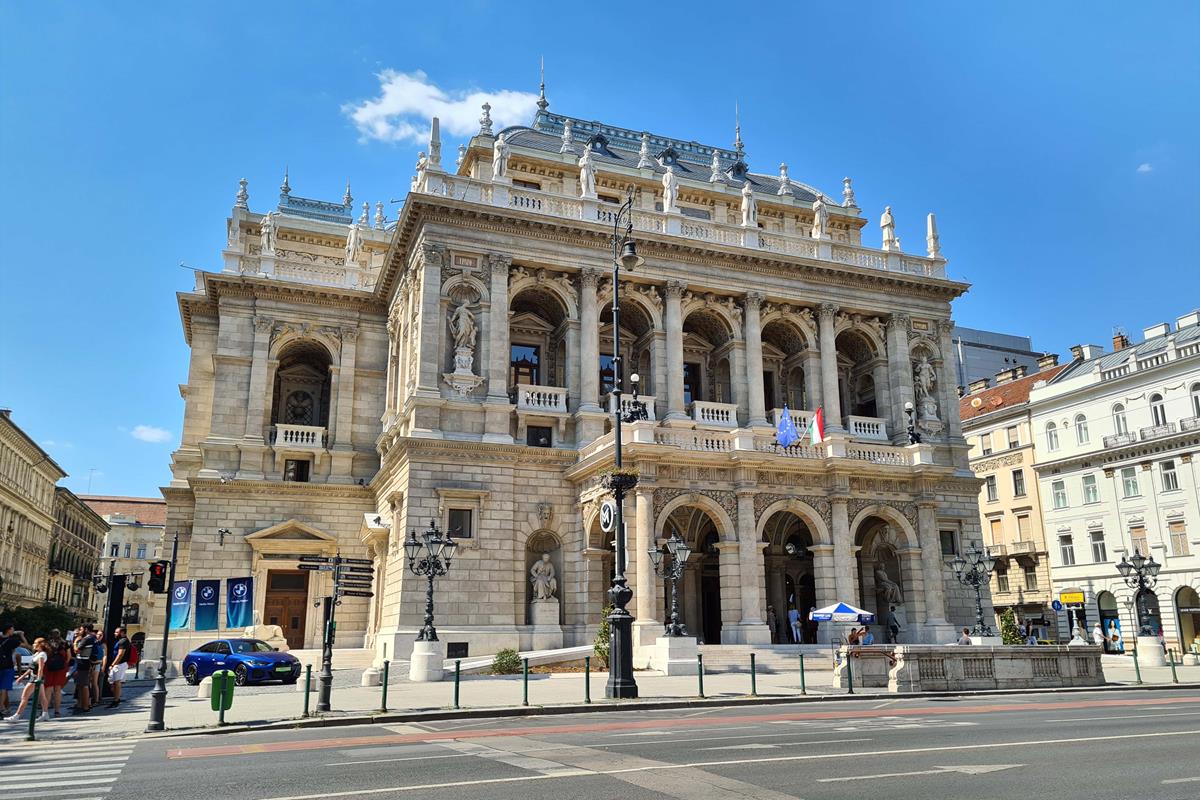PHOTOS: Everything you need to know about Budapest’s magnificent Opera House

The Hungarian State Opera House, then known as the Royal Hungarian Opera House, opened its doors to the public in 1884. Thus, the famous architect Miklós Ybl’s neo-Renaissance palace has been welcoming lovers of opera and ballet for a hundred and forty years. Every year, thousands of tourists visit the building to admire one of Budapest’s most important monuments.
With the construction of Andrássy Avenue (originally known as Sugár Avenue), by the end of the 19th century, the cityscape of Pest had been established and the idea of an independent opera house was also raised.

The building was all the more necessary because the National Theatre of the time was increasingly unable to meet the demands of both dramatic and operatic productions. In 1872, at the suggestion of Prime Minister Menyhért Lónyay, Bódog Orczy, the director of the National Theatre, submitted a comprehensive plan. In 1873, the Council of Public Works of Budapest (CPW) and the Emperor and King Franz Joseph I contributed to the initiative.

Miklós Ybl’s plan won
Six architects were invited to take part in the competition: Miklós Ybl, Imre Steindl, Antal Skalnitzky, István Linczbauer, and among the foreign masters Ferdinand Felmer and Ludwig Bohnstedt. The jury, by a large majority of votes, considered the entry by Ybl to be worthy of realisation. The construction programme was determined by Frigyes Podmaniczky, chairman of the jury and vice-president of the CPW. There was also an important stipulation that the work should be carried out only by Hungarian craftsmen and that the materials used should come exclusively from Hungary. Miklós Ybl complied with this request, with five exceptions: the marble cladding came from Carrara, the granite columns from Austria, the oak and cedar cladding from Italy, the stage equipment from Vienna and the chandelier from Mainz.
The building permit was issued in 1875, but the original plan had to be revised several times, as Franz Joseph I granted permission on the condition that the opera house in Pest would not be larger than the one in Vienna. Therefore, Ybl omitted the upper floor of the lobby and reduced the size of the foyer, thus making the building more proportionate, which is almost perfectly symmetrical both transversely and longitudinally. The artistic concept, however, remained the same: the architecture and the decorations all sought to express the power of music, the latter through the use of ancient mythological stories.

Scandal at the grand opening
The inaugural performance took place nine years later, on September 27, 1884, but the ceremony almost ended in scandal. As those present at the re-enactment in the fall of 2014 could see, the crowds gathered on Sugár Street wanted to see not only the outside but also the inside of the building. They argued that they had the right to do so since it cost a lot of money, including taxpayers’ money, to build, and they demanded answers why the construction was delayed four or five times. This alone was enough to make the opening ceremony a hugely popular event, with tickets costing two horses – an occasion that, on reflection, seemed never to return. At the gala performance, attended by Emperor Franz Joseph I, the first act of Bánk bán, the overture by László Hunyadi and the first act of Lohengrin were performed by Ferenc Erkel and his son Sándor Erkel.
During World War II, the Opera House stopped performing from Christmas 1944. Its vast basement was converted into a shelter; many members of the company and Opera House staff were sheltered here during the weeks of the siege, including Zoltán Kodály. The building survived the siege with relatively little damage. Following restoration work, the Opera opened its doors on 11 February 1945.
Fascinating sights galore
The Opera’s design consists of richly decorated interiors designed by renowned Hungarian artists such as Mór Than, Károly Lotz, and Bertalan Székely. It’s no wonder that the opera house, with its breathtaking scenery and vast repertoire, is a real treat for lovers of the genre. There’s no doubt that the 1,300-seat Hungarian State Opera House is stunning both inside and outside. The building is decorated in domestic neo-Renaissance splendour, although its rich decoration also has Baroque elements. It is adorned with statues of legendary composers such as Mozart, Beethoven, Tchaikovsky, Verdi and Franz Liszt, but you will also be enchanted by the noble marble of the lobby, the four huge marble statues in the main staircase, the red-carpeted staircase, the gilded boxes and the monumental cupola fresco by Károly Lotz. Wherever you look, you’ll see elegant grandeur, perfectly suited to the sublime atmosphere of The Nutcracker, Bánk bán or even Aida.

In 2015, the Opera House was voted one of the world’s most beautiful concert venues by the British online magazine The Telegraph. In 2017, the building was closed for renovation works. After a three-year delay, the renovated Opera House was opened in March 2022 and after a total of five years of closure, the final cost of the renovation amounted to HUF 55 billion (EUR 139,800,135.20).

Source:






I thought it was interesting the upgrade of the Hungary national museum looks like they hired shopping mall designers for the main floor complete with giant LED screens and lighting for historic structure a cold pharmacy look the new section showing restoration work on the smallest objects, but don’t understand the preservation of its biggest. I expected to see see lights changing colors around the base of the cabinets on the main floor.